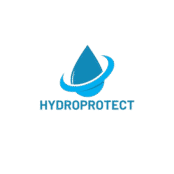Understanding Hotmelt Roof Waterproofing
Hotmelt roof waterproofing represents a significant advancement in building insulation technology. For owners of large halls, warehouses, and diverse property managers, it offers a solid, enduring solution compared to traditional methods. At its core, hotmelt involves applying a molten bitumen compound over a prepared surface. As the name suggests, this technique ensures a seamless, watertight membrane that effectively keeps water infiltration at bay, maximizing the longevity of roofs.
The choice of hotmelt waterproofing comes from the need for reliable, durable, and cost-effective solutions. With its robust nature and adaptability, hotmelt has gained momentum in recent years among developers and facility managers worldwide. In this article, we will delve into the compelling reasons behind this preference and explore how hotmelt waterproofing can revolutionize roofing solutions for industrial properties.
The Advantages of Hotmelt Waterproofing
Long-Lasting and Durable
One of the primary benefits of hotmelt waterproofing is its longevity. Unlike other roofing methods where layers may eventually peel or degrade, hotmelt creates a bonded, monolithic layer that remains intact even under extreme conditions. This aspect not only ensures prolonged protection but also minimizes the frequency of maintenance. As a result, property owners can significantly cut down on repair costs over time.
Adaptable to Various Surfaces
The versatility of hotmelt systems is another advantage worth noting. Many older buildings possess unique architecture and surface irregularities that require a flexible approach to waterproofing. Hotmelt systems can easily adapt to different surfaces, whether it’s concrete, plywood, or other substrates, providing a uniform layer of protection.
Cost-Effective Installation
While the initial cost of hotmelt waterproofing may seem higher than some alternatives, its durability and low maintenance costs provide a comprehensive long-term saving. Furthermore, due to its cold-installed nature, it reduces health and safety hazards for the workers involved, potentially lowering insurance premiums and liability concerns.
- Durability resulting in fewer repairs.
- Adaptations for complex surface geometries.
- Reduced health risks for installation crews.
Hotmelt vs. Traditional Waterproofing Methods
Seamless Installation Process
Traditional roofing solutions, such as single-ply membranes or built-up roofing, often involve seams and joints. These can become potential weaknesses, especially when subjected to harsh weather conditions. Unlike these methods, hotmelt creates a seamless barrier. This seamless nature elevates its resistance to water ingress, thereby providing superior waterproofing capability.
Environmental Benefits
Modern hotmelt products often incorporate recycled materials, which contribute to sustainability goals. Additionally, the heat-based application can effectively encapsulate volatile compounds without releasing them into the environment. This eco-friendly characteristic is increasingly attracting attention in markets where green building regulations are stringent.
- Seamless, uniform application technique.
- High resistance to extreme weather.
- Sustainable through the use of recycled materials.
Applications of Hotmelt Waterproofing
Industrial and Commercial Buildings
For warehouse and hall owners, maintaining the integrity of roofing systems is critical to protecting goods stored within. Hotmelt’s resilience ensures that even under heavy machinery or during construction work above the roof, water remains effectively barred. This aspect is especially crucial for properties housing sensitive goods or equipment.
Green Roof Systems
Hotmelt is particularly favorable for green roof systems due to its load-bearing and root-resistant properties. The ability to support vegetation and retain soil not only enhances urban biodiversity but also contributes to reducing urban heat island effects. Thus, hotmelt waterproofing is highly sought after in cities looking to expand their green infrastructure.
Summary
Hotmelt waterproofing stands out as an unrivaled solution in the realm of roof insulation, especially for industrial and commercial applications. Its main attractions — durability, adaptability, and cost-effectiveness — offer a long-term return on investment that surpasses traditional methods. Featuring a seamless installation process and possessing eco-friendly qualities, it aligns perfectly with modern sustainability goals. These factors make hotmelt a preferred choice among building developers and property managers aiming to secure and sustain their investments for decades.

